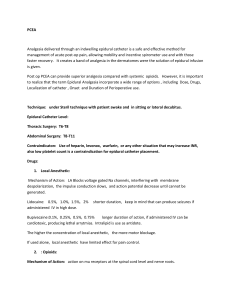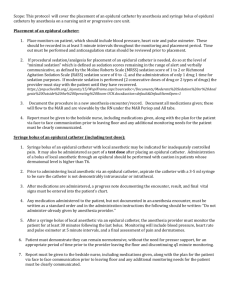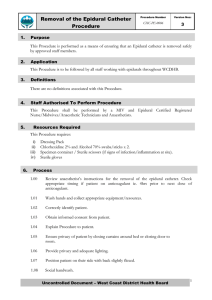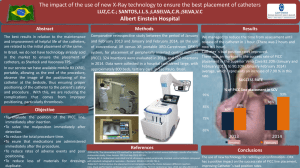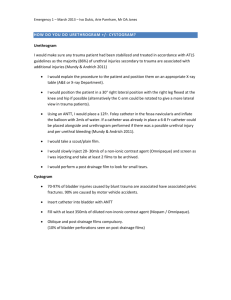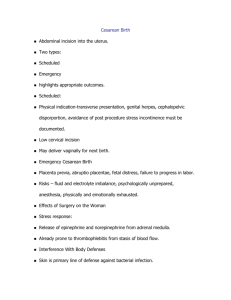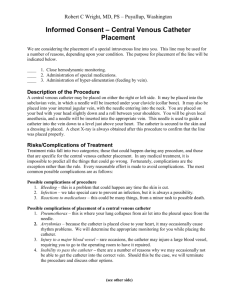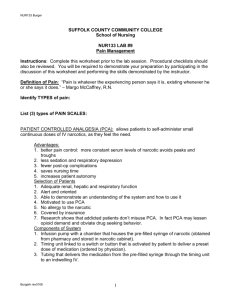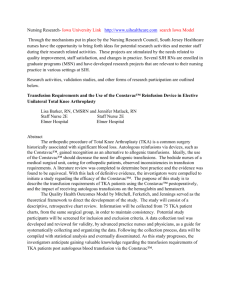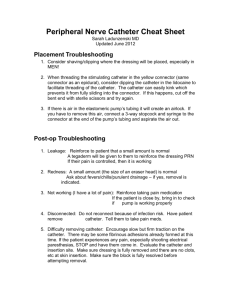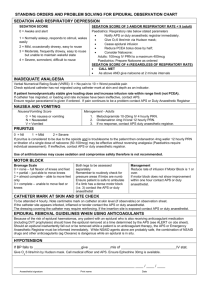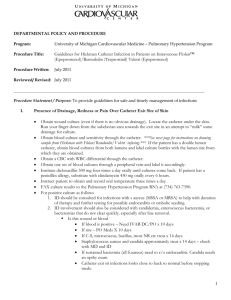Word - Kansas State Board of Nursing
advertisement
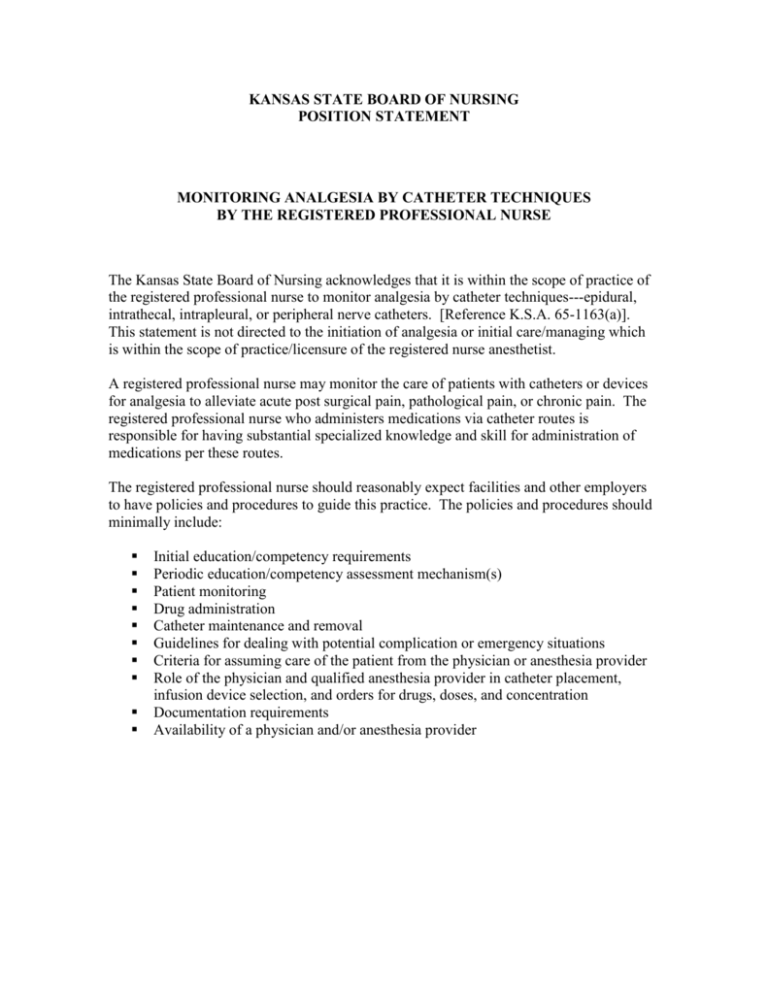
KANSAS STATE BOARD OF NURSING POSITION STATEMENT MONITORING ANALGESIA BY CATHETER TECHNIQUES BY THE REGISTERED PROFESSIONAL NURSE The Kansas State Board of Nursing acknowledges that it is within the scope of practice of the registered professional nurse to monitor analgesia by catheter techniques---epidural, intrathecal, intrapleural, or peripheral nerve catheters. [Reference K.S.A. 65-1163(a)]. This statement is not directed to the initiation of analgesia or initial care/managing which is within the scope of practice/licensure of the registered nurse anesthetist. A registered professional nurse may monitor the care of patients with catheters or devices for analgesia to alleviate acute post surgical pain, pathological pain, or chronic pain. The registered professional nurse who administers medications via catheter routes is responsible for having substantial specialized knowledge and skill for administration of medications per these routes. The registered professional nurse should reasonably expect facilities and other employers to have policies and procedures to guide this practice. The policies and procedures should minimally include: Initial education/competency requirements Periodic education/competency assessment mechanism(s) Patient monitoring Drug administration Catheter maintenance and removal Guidelines for dealing with potential complication or emergency situations Criteria for assuming care of the patient from the physician or anesthesia provider Role of the physician and qualified anesthesia provider in catheter placement, infusion device selection, and orders for drugs, doses, and concentration Documentation requirements Availability of a physician and/or anesthesia provider DEFINITIONS Epidural Catheter – Catheter placed within the epidural space, the space that envelopes the dura mater and its contents extending from the foramen magnum superiorly to the sacrococcygeal membrane inferiorly. 1 Intrathecal Catheter – Catheter placed within the subarachnoid space (usually at the lumbar level), the space within the dura and arachnoid layers surrounding the spinal cord which contains spinal fluid. 2 Epidural or Intrathecal analgesia – Terms applied to the pain relief produced by the administration of narcotics and/or dilute local anesthetic solutions into the epidural or intrathecal space for treatment or relief of pre and post surgery pain, labor pain, cancer pain, chronic pain, post-trauma, or for acute medical conditions. 3 Intrapleural Catheter – Catheter placed within the intrapleural space. 4 Peripheral Nerve Infusion Device – Catheter inserted to block or ease pain related to specific peripheral nerves (i.e. brachial plexus). 5 Optimal Analgesia – Meeting the patient’s goal, including pain intensity and goals related to function, activities, and quality of life. 6 1 American Association of Nurse Anesthetists. Position Statement Number 2.8, Title: Provision of Pain Relief by Medication Administered via Continuous Epidural, Intratheral, Peripheral Nerve Catheters, or Other pain Relief Devices; Adopted by the Council on Nurse Anesthesia Practice, September 1985, revised June 1988, and adopted by the AANA Board of Directors, June 1989, revised June 1990, 1995. 2 Ibid 3 Ibid 4 Ibid 5 Ibid 6 Comprehensive Accreditation Manual for Hospitals. “Joint Commissions Resources Hospital Publication Guide. Update 2” (May 2001): p. PE-9. Approved; 2/19/03
